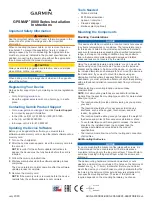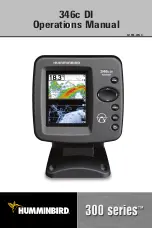
How Sonar Works
Sonar uses sound waves to determine the presence and location of underwater objects. The
time measured between the transmission of the sound wave and the reception of any
reflection can be used to determine distance from an object. Analysis of the reflected signal
can also be used to determine location, size, or composition of underwater objects.
Humminbird® products consist of two main components: the sonar unit and the
transducer. The sonar unit contains the transmitter and receiver, as well as the user
controls and LCD display. The transducer is mounted beneath the water surface and
converts electrical energy from the transmitter into mechanical pulses or sound waves. The
transducer also receives reflected sound waves and converts them back into electrical
signals for display on the sonar unit.
The transmit and receive cycle is very fast. A sound wave can travel from the surface to a
depth of 240 ft (70 m) and back again in less than
¹⁄₄
of a second. It is unlikely that your boat
can "outrun" this sonar signal.
A number of variables affect the nature of information which can be derived from the sonar
return. Sonar signals generated at a higher frequency have the advantage of greatly increased
sonar resolution, although the distance (depth) a high-frequency signal can travel is relatively
short. A low frequency signal can travel great distances, but provides poor sonar resolution. The
shape of the transmitted sonar signal greatly affects the information available as well. A single
wide beam has a large area of coverage but poor resolution of detail. A narrow beam has
excellent detail, but only a limited area of coverage.
1
Содержание 531338-1_C
Страница 1: ...Matrix 47 Operations Manual Matrix 47 Operations Manual 531338 1_C ...
Страница 64: ...59 Notes ...
Страница 65: ...60 Notes ...

























